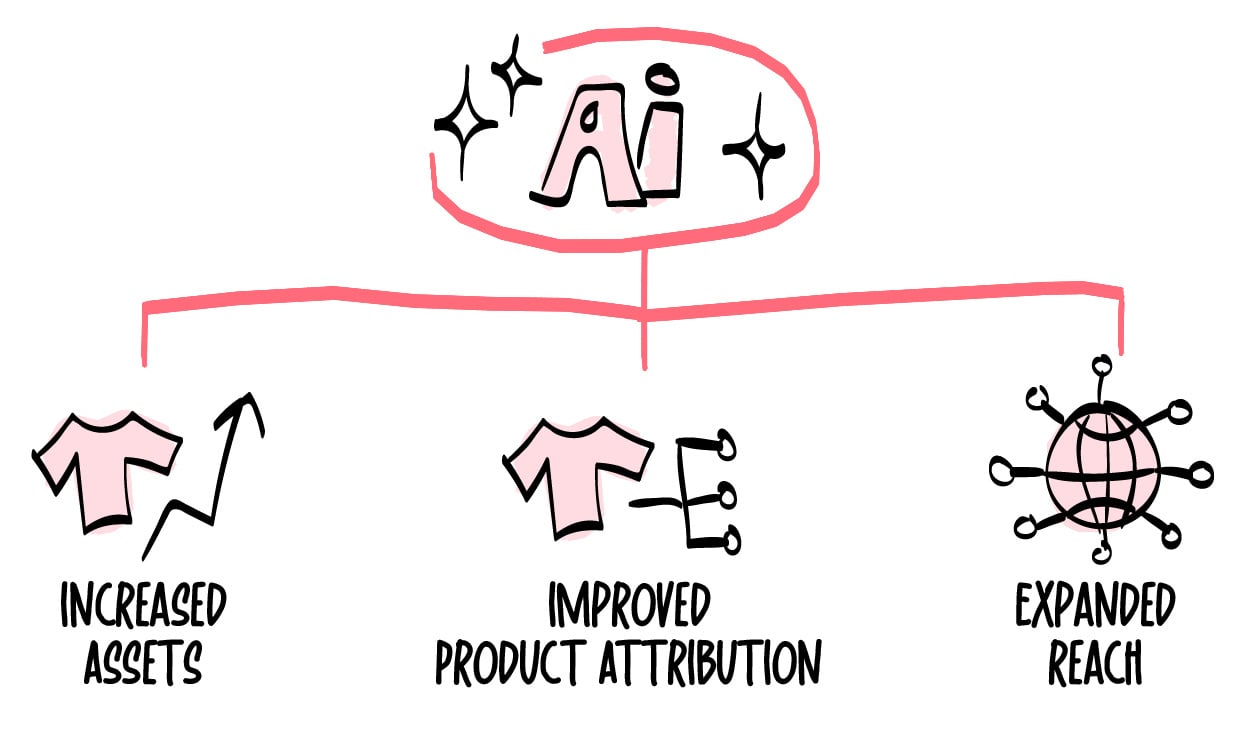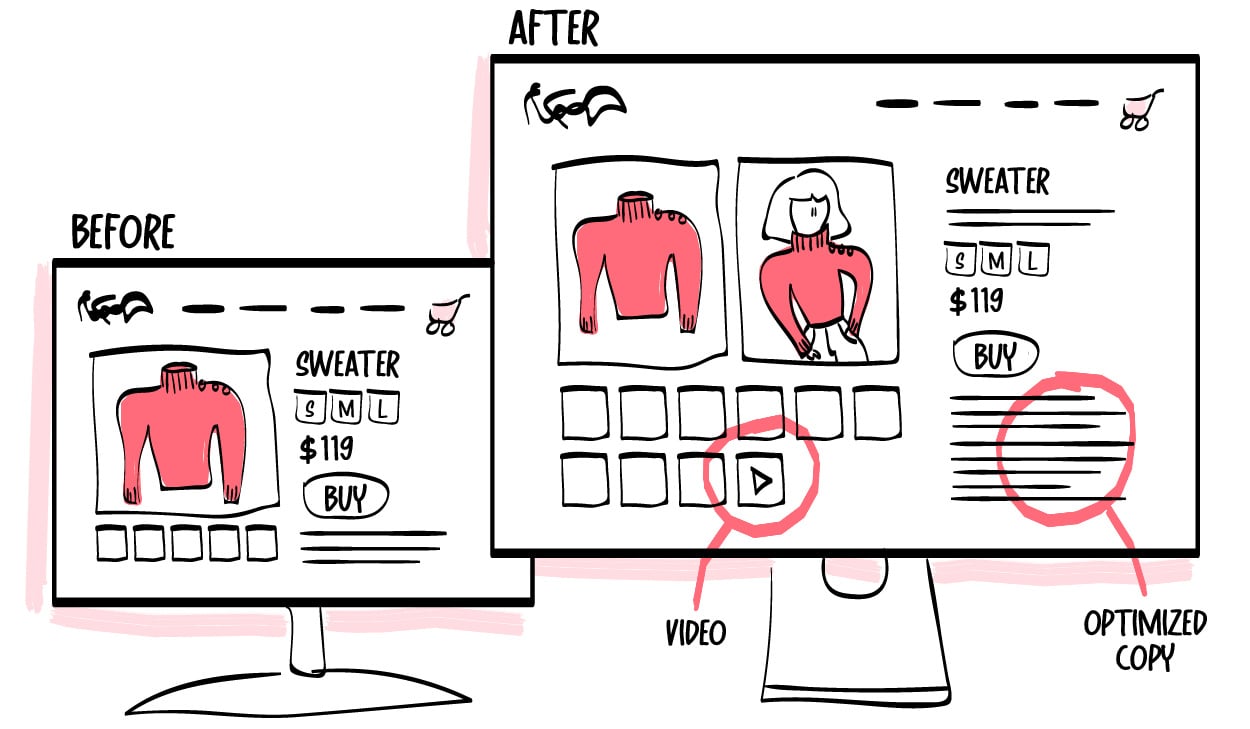
A weekly newsletter exploring the intersection of creative operations, technology, and online retail.
#012: Why the Demand for Content is Overlooked—and How to Fix It
When we think about AI, we often assume that everything else remains constant—that we need to produce the same content we’re creating today at a lower cost.
But that perspective misses the mark.
The reality is that the need for content in retail is hugely underserved, and to meet its demand, creatives need to produce much more content.
In this issue, I’ll share how AI can help creatives move beyond cost-cutting and toward scaling their content production to meet an unmet market.
The Shift from Cost Cutting to Scaling Smartly
We’re at a unique moment in history. The cost of producing content is lower than ever, enabling creative teams to generate more than before.
Imagine a brand producing content for 100,000 products annually, requiring half a million assets.
A common question a leader might ask is: How can we produce those assets at a lower cost? It’s a fair question, but it’s not the most relevant in terms of content.
A bolder, more relevant question is: How can we produce ten times more assets for the same cost?
This shift in perspective is crucial because the focus shouldn’t be on cutting budgets but on scaling them intelligently.
When creatives focus on creating more content at the same cost while demonstrating their value as key business drivers, their budgets are more likely to grow.
Why AI Is a Gateway to Demand (and Not Just Efficiency)
There’s always pressure to do more with less, with leaders often framing AI as a way to optimize processes and cut costs: “We have processes today that AI can make more efficient, helping us save money.”
While this thinking is common, it misses the bigger picture. As I wrote above, the need for content is hugely underserved—and AI’s true potential lies in fueling that demand exponentially.
Imagine creating 10 times more content with the same resources. This could lead to more than a 10% revenue increase compared to a mere 0.5% gain on the bottom line from halving studio costs.

Sadly, many retailers approach new tech like Gen AI defensively rather than offensively, using them to maintain the status quo.
But the landscape is shifting.
Instead of repeating the past, creative leaders need to build a different business case and ask: What if we had to produce ten times more content with the same resources?
This is where the real opportunity lies. And it’s not limited to efficiency, either. It’s about reaching untapped markets and creating content you’re not producing today.
Take product detail pages (PDPs), for example.

If one currently has five images, why not aim for 10? And what about video? Many products don’t even feature one today. Imagine the impact of adding video (or what we call “derived assets”) to your content strategy.
You could also consider expanding with better copywriting tailored to specific channels, offering more translations to reach global audiences, or improving product attribution for enhanced search discoverability.
Shifting your mindset from cost-cutting to scaling content production with AI opens doors to new possibilities and drives meaningful business outcomes for you and the rest of the organization.
Embracing AI's True Potential
Because of resource constraints, we're already short on content today, and the gap will only grow in the future. AI is more than a tool for efficiency. It's a gateway to scale and competitive advantage.
To stay ahead, leaders must reframe their approach, not as a cost-cutting exercise but as an opportunity to do more, create more, and reach further. Successful brands will embrace this shift and adapt their content strategies to scale smartly.
The question isn't how much we can save but how much more we can achieve.
Grateful,
Thomas

|
Thomas Kragelund Follow me on LinkedIn. |
Get Content Insider In Your Inbox.
The weekly newsletter packed with actionable tips, industry trends, and insider insights from Creative Force CEO Thomas Kragelund. Stay ahead in creative production and online retail—subscribe now to gain the insights you need to drive growth and stay competitive.



